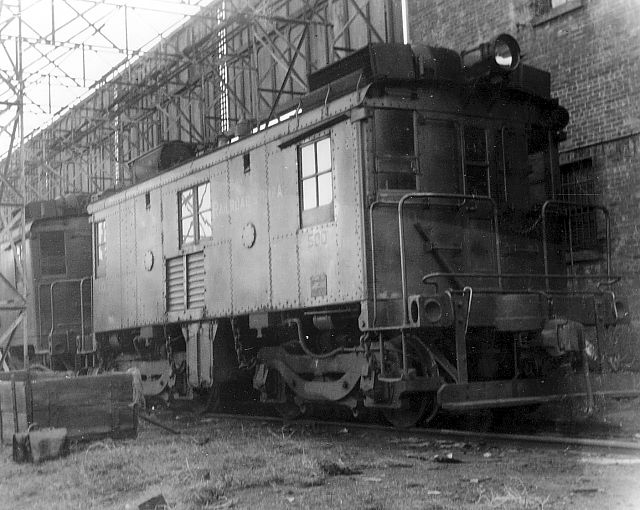 |
| "BUILT FOR THE ERIE" Builder's card photo of Erie no.520 hot off the assembly line in June of 1949. |
I just received my latest photo find, a builder's card photo of Erie no.520. While I originally got this to add to my photo collection, this rekindled an idea about creating a photo roster inventory system for the layout.
 |
| Reverse side of 8" x 3" builder's card. Great information about the locomotive. |
This idea is far from original. I have seen similar ideas for car cards
as a means of visual identification, and even one of my favored vendors,
Centerpiece Rolling Stock ships a small builder's photo with each
finely weathered and detailed item they sell. It is a nice touch, and
the idea could be extended to a maintenance card system.
 |
| Approximately 3-1/4" x 2-1/2" builder's photo from Centerpiece Rolling Stock. On the back is handwritten, "Custom built for Riley Triggs by Centerpiece Rolling stock". |
Several people have inventory applications or even simple spreadsheets that catalog and provide some measure of recording work, origin, price, etc. for locomotives and rolling stock. I use
Yard Office at the moment, and it provides the feature to add a photo of your inventory item. By the way, I do like Yard Office, but I am ready for an iPhone app version that I can access while at the hobby shop, local train show, or just surfing for eBay bargains away from my computer. This would allow a quick check to see if I already had one of something (how many times do I wonder if I have that particular road number, or do I already own that unusual flatcar load?) so that my buying is as efficient as possible.
 |
| Screen shot of my Yard Office entry for a repainted Bachmann 44 tonner for the Hoboken Shore. Sharp readers will notice that the lower body section (where words "Hoboken Shore Railroad" appear) is mistakenly painted green instead of the prototypical black. This is a hazard of working with distractions around. I've already purchased another set of decals from Paul at Prime Mover Decals, but I'm not going to repaint it until I get the sound decoder working properly! |
So yes, there are electronic versions of the builders photo which are very useful, but I wonder if I might prefer a printed version to have at my workbench. The back, instead of the specifications of the prototype item would have space for noting coupler type, wheelsets, trucks, accessories, light bulb, decoder, etc. while leaving room for a maintenance log with date and work performed spaces to fill in.
So why this old school physical form from such a tech guy? During the day I think a lot about the difference between virtual and actual environments and how information is handled in each. I'm very much of a computer and electronic user/proponent, but I am really concerned with
appropriate use of virtual information systems, and I spend some effort to think of ways that the gap between our virtual existence and our physical being is made as small as possible. So what about the physical nature of a builder's card makes it desirable over a purely electronic record keeping method?
The tactility of it is what appeals to me. Scratching a few notes on a piece of card stock with a no.2 pencil just seems like the right thing to do for a hobby that ultimately is all about physical objects and sensations. It may also be more "prototypical" for a 1950s railroad shop to have a file or note card system of keeping track of the essential information on capital investments, but there is just something more engaging about touching a photo card and interacting with it physically that makes the experience more than just the act of keeping a record - it is more real because it involves touching an object and not a keyboard. It may even be more convenient, since it would be in the place where maintenance happens and not at my computer desk a few steps away.
So back to my original find - the AMERICAN LOCOMOTIVE COMPANY S-2 builder's card. The best thing about it is that it is physical. And even more so than a regular photograph, the card stock it is printed on and the information on the back begs for this artifact to be held, explored, used and appreciated. Certainly different than having an image on a computer screen, and that difference is one worth thinking about.


















